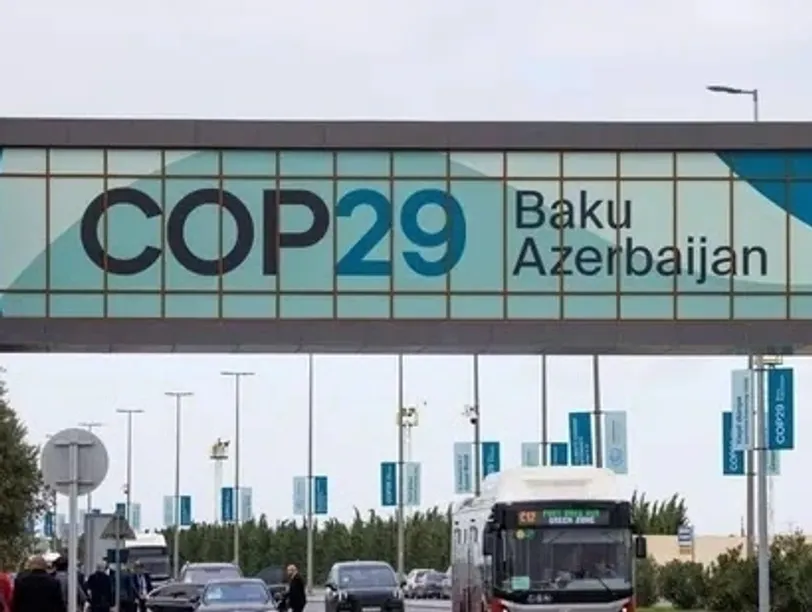COP29 in Baku, often dubbed the “finance COP,” has placed climate finance at the forefront of discussions, reflecting the urgent need to align global financial resources with climate action. A major theme of the conference is increasing financial support for climate mitigation and adaptation in developing countries, particularly those in the Global South, where the impacts of climate change are already being felt most acutely. While there have been some important developments, the outcomes so far show a mix of progress and continuing challenges in bridging the financial gap required to address climate change globally.
A key goal for this year’s conference is to finalise the New Collective Quantified Goal (NCQG), an international fund that developing countries could draw on to implement their climate action plans. The amount of money dedicated to the NCQG is crucial because it will directly influence how effectively these countries can meet their Nationally Determined Contributions (NDCs) -the targets set under the Paris Agreement. According to the UNFCCC, the cost of implementing these NDCs could reach between $5.8 – $5.9 trillion cumulatively by 2030. In the submissions to the United Nations Framework Convention on Climate Change (UNFCCC), there is a diversity of opinions regarding the quantum, quality and access of climate finance for developing countries. On quantum, necessary contributions from the developed nations amount to $1 trillion annually. India, in its submission to the UNFCCC, has emphasised the importance of climate finance as a crucial enabler of climate action under the Paris Agreement, calling for a single, unified goal that sets clear, measurable targets for both the amount and timing of financial contributions.
Keeping with the spirit of NCQG, Azerbaijan, as the host country for COP29, launched the Climate Finance Action Fund (CFAF), a new initiative to support climate action in developing nations. The CFAF is part of a broader action agenda to increase global ambition and facilitate concrete action. The fund aims to raise $1 billion from contributions made by fossil fuel-producing countries and companies, with Azerbaijan itself being one of the founding contributors. The goal is to raise contributions from at least 10 countries.
Half of the fund’s capital is earmarked to finance climate-related projects in developing countries, focusing on mitigation, adaptation, research, and development, as well as promoting the adoption of cleaner energy technologies, improving energy efficiency, and building climate resilience in vulnerable populations. The other half of the funds will help developing countries meet their next-generation NDCs, keeping the global 1.5°C target within reach. Additionally, 20% of the fund’s returns will be allocated to a Rapid Response Funding Facility (2R2F) to provide immediate, concessional grants to help vulnerable countries, particularly Small Island Developing States (SIDS) and Least Developed Countries (LDCs), cope with the impacts of natural disasters.
The conference also highlighted the plight of SIDS and LDCs, with the adoption of the Baku Declaration on Amplifying SIDS’ Voice, which calls for amplifying the voices of these nations and emphasising their unique vulnerabilities to climate change. The declaration stresses the disproportionate impacts of climate change on these countries and urges urgent action to address these injustices. COP29 President Babayev praised the leadership shown by SIDS in the face of climate challenges and called on other nations to follow their example, reinforcing the principle of “common but differentiated responsibilities”.
In addition to public sector commitments, leaders from the business, finance, and philanthropic sectors also made major announcements at the COP29 Business, Investment, and Philanthropy Climate Platform (BIPCP). The Asian Development Bank (ADB), for instance, pledged $3.5 billion to promote sustainable water use and food security, particularly in regions like Central Asia, the South Caucasus, and Pakistan, where glaciers are rapidly melting. Meanwhile, Azerbaijan’s banking sector committed $1.2 billion for the development of green and sustainable projects in the country by 2030. Sweden also made a significant contribution, committing $730 million to the Green Climate Fund (GCF) to help low- and middle-income countries address the impacts of climate change.
However, as COP29 crosses its halfway mark, it remains unclear whether an agreement on the NCQG will be reached. The discussions around how the fund will be operationalised are critical, as the NCQG is set to replace the current funding framework next year. India has taken a strong stance, calling out developed countries for pressuring developing nations to ramp up their mitigation efforts while failing to make sufficient progress themselves. Environmentalists have also expressed concerns about the CFAF, which remains voluntary and does not mandate high-emission countries to contribute proportionally. Azerbaijan has yet to specify the size of its own contribution to the fund, and critics worry that such funds could inadvertently grant fossil fuel companies the social licence to continue their operations while inadvertently hindering the global transition to net-zero emissions.
As COP29 unfolds, it’s clear that climate finance is not just a technical or financial issue, but a matter of global equity and urgency. While commitments to support SIDS and LDCs have been made, the real test lies in whether these funds will be sufficient and effectively distributed to meet the scale of the crisis. Building upon the lessons learned from the unmet $100 billion target, developed nations must adopt a proactive stance towards fulfilling their climate finance commitments. The negotiations around NCQG are crucial, as they will set the financial framework for the next decade. However, the absence of binding obligations for high-emission countries to contribute their fair share raises serious concerns about the sincerity of these commitments.

